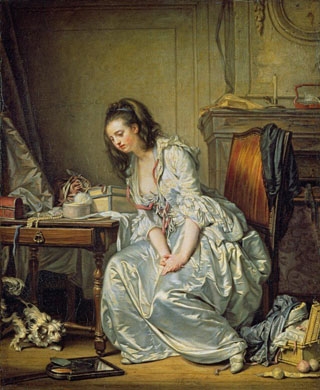This web site is intended as a companion to the Cambridge University Press publication, Dramatic Expression in Rameau’s Tragédie en Musique: Between Tradition and Enlightenment.
This book explores the story of music's role in the French Enlightenment, focusing on dramatic expression in the musical tragedies of the composer-theorist Jean-Philippe Rameau. It reveals how his music achieves its highly moving effects through an interplay between rational design, especially tonal design, and the portrayal of feeling and how this results in a more nuanced portrayal of the heroine. Offering a new approach to understanding Rameau's role in the Enlightenment, the book illuminates important aspects of the theory-practice relationship and shows how his music embraced Enlightenment values. At the heart of the study are three scene types that occur in all of Rameau's tragedies: confession of forbidden love, intense conflict and conflict resolution. In tracing changes in Rameau's treatment of these, Verba finds that while he maintained an allegiance to the traditional French operatic model, he constantly adapted it to accommodate his more enlightened views on musical expression.
“The Broken Mirror,” c. 1762/63, by Jean-Baptiste Greuze.
The Wallace Collection, London, United Kingdom.
 |
The lovely woman in the Greuze painting has much in common with the heroines in Rameau’s tragedies; a pleasurable experience has been disrupted by a disturbing, even portentous, incident. She is shown responding to her shattered image, broken into pieces, as her mirror presumably fell from her hands. And yet, in the Greuze portrayal of her emotions, she still retains her beauty, precisely because she responds with dignity and restraint, reflected as an overall quality in the painting itself (no radical distortion of her features, no wild uncontrolled gestures). And so it is with Rameau’s portrayal of the plight of the heroines in his tragedies: women who respond with deep feeling, but also with dignity and restraint, reflected in the overall quality of the musical setting. |
The listener might prefer to begin with the librettos and commentary while listening and then proceed to the use of scores.
Hippolyte et Aricie
The performance is by Marc Minkowski, Director, with les Musiciens du Louvre; CD, Archiv Production, Deutsche Grammophon, cat. No. 4458532, 1995. Gratitude is owed to Deutsche Grammophon for making these excerpts available. The piano-vocal score is from the Durand & Fils edition, Paris [1902?].
- Act I, Scene 1
- Act I, Scene 2
- Act II, Scene 5, “Trio des Parques
- Act III, Scene 1
- Act III, Scene 3
- Act III, Scene 9
- Act V, Scenes 1 and 2
Castor et Pollux
The performance is by Nicolaus Harnoncourt, Director, with the Concentus Musicus Wien and the Stockhomer Kammerchor; CD, Teldec Schallplatte GmbH, LC 3706, Haussweb 25, 2000 Hamburg, 1987, Cat. No. 0825646973088 (original Cat. No. 00229242251023). Gratitude is owed to Warner Classics & Jazz for making these excerpts available. The piano-vocal score is from the Durand & Fils edition, Paris [1903?].
- Castor et Pollux - Act I, Scene 3
- Castor et Pollux - Act III, Scene 3
- Castor et Pollux - Act IV, Scene 1
- Castor et Pollux - Act IV, Scene 4
Dardanus
The performance is by Marc Minkowski, Director, with Les Musiciens du Louvre; CD, Archiv Production, Deutsch Grammophon, Cat. No. 4634762, 2000. Gratitude is owed to Deutsche Grammophon for making these excerpts available. The piano-vocal score is from the Durand & Fils edition, Paris 1904?].
- Dardanus - Act I, Scene 1
- Dardanus - Act II, Scene 5
- Dardanus - Act III, Scene 2
- Dardanus - Act V, Scene 2
Zoroastre
In the absence of any available recording of the 1749 version of Zoroastre, this web site provides two examples from a recording of the 1756 version. The examples are included here since they are close to the comparable scenes from the 1749 version.
The performance is by William Christie, Conductor, with Les Arts Florissants, CD Erato, p. 2002, cat. no. 0809274318220. Gratitude is owed to Warner Classics & Jazz for making these excerpts available. The piano-vocal score is from the T. Michaelis edition, Paris [1882?], reprinted by Broude Brothers, New York [1971].
Les Boréades
Performed by William Christie, Conductor, with Les Arts Florissants, with guest dance company La La La Human Steps, DVD Video, Waldron, Heathfield, East Sussex, UK, Opus Arte, 2004, cat. no. OA 0899 D. Special appreciation is owed to William Christie, who has done so much to breathe new life into Rameau’s tragedies, greatly contributing to the growing audiences who take pleasure in Rameau’s music.

